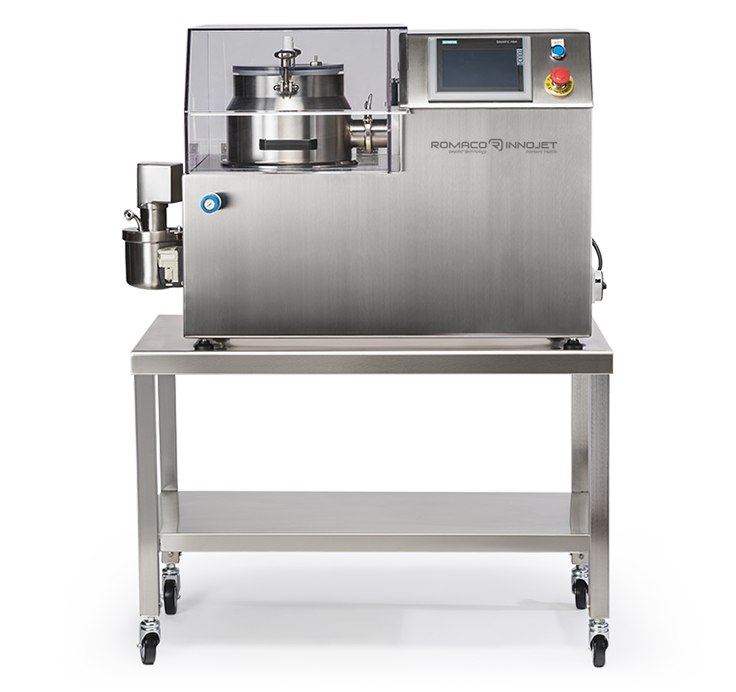Essential cookies enable basic functions and are necessary for the proper function of the website.
| Name | Romaco Cookie Consent |
|---|---|
| Provider | Romaco |
| Purpose | Saves the visitors preferences selected in the Cookie Box |
| Privacy | https://www.romaco.com/privacy |
| Cookie name | rmc_cookies_status |
| Expiration | 30 |
| Name | Romaco Matomo Consent |
|---|---|
| Provider | Romaco |
| Purpose | Saves the visitors preferences for matomo selected in the Cookie Box |
| Privacy | https://www.romaco.com/privacy |
| Cookie name | rmc_cookies_status_matomo |
| Expiration | 30 |
| Name | Romaco LinkedIn Consent |
|---|---|
| Provider | Romaco |
| Purpose | Saves the visitors preferences for linkedin selected in the Cookie Box |
| Privacy | https://www.romaco.com/privacy |
| Cookie name | rmc_cookies_status_linkedin |
| Expiration | 30 |
Statistics cookies collect information anonymously. This information helps us to understand how our visitors use our website.
| Accept |
|
|---|---|
| Name | Matomo |
| Provider | Romaco |
| Purpose | Cookie by Matomo used for website analytics. Generates statistical data on how the visitor uses the website. |
| Privacy | https://www.romaco.com/privacy |
| Cookie name | _pk_*.* |
| Expiration | 13 months |
| Accept |
|
|---|---|
| Name | Google Ads |
| Provider | |
| Purpose | This Google Ads cookie allows the identification of the user. |
| Privacy | https://policies.google.com/privacy |
| Cookie name | _gcl_au |
| Expiration | 90 days |
| Accept |
|
|---|---|
| Name | LinkedIn Insight Tag |
| Provider | LinkedIn Corporation |
| Purpose | Used to track visitors across multiple websites to present relevant advertising based on the visitor's preferences. |
| Privacy | https://www.linkedin.com/legal/privacy-policy |
| Cookie name | bcookie, bscookie, lidc, UserMatchHistory |
| Expiration | 2 years |
Content from video platforms and social media platforms is blocked by default. If External Media cookies are accepted, access to those contents no longer requires manual consent.
| Accept |
|
|---|---|
| Name | YouTube |
| Provider | Google Ireland Limited, Gordon House, Barrow Street, Dublin 4, Ireland |
| Purpose | Used to unblock YouTube content. |
| Privacy | https://policies.google.com/privacy?hl=en&gl=en |
| Cookie name | NID |
| Expiration | 6 Month |
| Accept |
|
|---|---|
| Name | Vimeo |
| Provider | Vimeo Inc., 555 West 18th Street, New York, New York 10011, USA |
| Purpose | Used to unblock Vimeo content. |
| Privacy | https://vimeo.com/privacy |
| Cookie name | vuid |
| Expiration | 2 Years |

Designed for pharmaceutical wet granulation processes. Granulator converts fine-powder heterogeneous mixtures into a uniform granulation with increased particle size and higher density.
Performance: 0.5 to 7.5 L

Granulation refers to the process in which primary dust particles are made to adhere and form larger entities of multiple particles, called granules.
In wet granulation, the granules are formed by adding an agglutinative solution.
The granulation solution contains a solvent or carrier material that must be volatile so that it can be removed by drying. Typical fluids include water, ethanol and isopropanol which can also be used in combination. The liquid solution can be aqueous or solvent-based. Aqueous solutions have the advantage of being safer to handle than other solvents.
The granulation process combines one or more dust particles and forms a granule that will allow the formation of tablets within the required limits.

More and more it is important to optimise processes before industrialisation. Obviously to minimise time and cost risks.
| Capacity (l) | Dimensions (mm) | ||||
|---|---|---|---|---|---|
| Model | min. | max. | A | B | C |
| TP G Lab (Bowl 2L) | 0,5 | 1,5 | 1000 | 670 | 600 |
| TP G Lab (Bowl 5L) | 1,5 | 3,5 | 1000 | 670 | 600 |
| TP G Lab (Bowl 10L) | 2,5 | 7,5 | 1000 | 670 | 600 |
Datasheet (EN) 1.9 MB (pdf)
* Approximate data / loading levels may change depending on tablets shape and density

